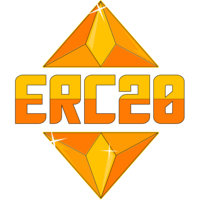
Understanding ERC20: The Backbone of Blockchain Tokens
Demystifying ERC20 Tokens
In the realm of blockchain technology, ERC20 tokens play a pivotal role in facilitating digital transactions and powering decentralized applications (dApps). However, for newcomers to the space, understanding ERC20 tokens and their significance can be a daunting task. Let’s demystify ERC20 tokens and explore their key attributes.
The Basics of ERC20 Standards
ERC20 stands for “Ethereum Request for Comments 20,” which is a technical standard used for smart contracts on the Ethereum blockchain. ERC20 tokens adhere to a set of rules and protocols that define how they should behave within the Ethereum ecosystem. These standards ensure interoperability and compatibility among different ERC20 tokens.
Key Features of ERC20 Tokens
ERC20 tokens come with a range of features that make them highly versatile and widely used in the blockchain industry. These features include fungibility, divisibility, transferability, and the ability to interact with smart contracts. Additionally, ERC20 tokens can be easily created, traded, and stored using Ethereum-compatible wallets.
The Importance of ERC20 in the Crypto Market
ERC20 tokens form the backbone of the crypto market, serving as the building blocks for a wide array of digital assets and applications. From utility tokens used for accessing dApps to security tokens representing ownership in real-world assets, ERC20 tokens enable a myriad of use cases within the decentralized finance (DeFi) ecosystem.
ERC20 Tokens and ICOs
One of the most significant use cases of ERC20 tokens is in Initial Coin Offerings (ICOs), where startups and projects raise funds by issuing ERC20 tokens to investors in exchange for cryptocurrencies like Ethereum (ETH). These ERC20 tokens typically represent ownership in the project or utility within its ecosystem, offering investors a stake in its success.
Interoperability and Compatibility
One of the key advantages of ERC20 tokens is their interoperability and compatibility with various platforms and wallets that support the Ethereum blockchain. This interoperability allows ERC20 tokens to be seamlessly integrated into decentralized exchanges (DEXs), lending platforms, and other DeFi applications, enhancing their liquidity and utility.
Challenges and Limitations
While ERC20 tokens offer numerous benefits, they also come with certain challenges and limitations. One notable limitation is the lack of native support for features like transaction privacy and scalability within the ERC20 standard. Additionally, the reliance on the Ethereum blockchain exposes ERC20 tokens to network congestion and high transaction fees during periods of high demand.
The Future of ERC20 Tokens
Despite these challenges, the future of ERC20 tokens appears promising, with ongoing developments aimed at addressing scalability and interoperability issues. Projects like Ethereum 2.0 and Layer 2 scaling solutions seek to enhance the efficiency and scalability of the Ethereum network, paving the way for broader adoption of ERC20 tokens in the mainstream.
Conclusion
In conclusion, ERC20 tokens serve as the cornerstone of the Ethereum ecosystem, enabling the creation and exchange of digital assets in a decentralized manner. By adhering to a set of standardized protocols, ERC20 tokens ensure interoperability and compatibility across different platforms, fueling innovation and growth within the blockchain industry. As the ecosystem continues to evolve, ERC20 tokens are poised to play an increasingly integral role in shaping the future of decentralized finance and digital economies. Read more about erc20 blockchain